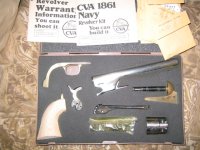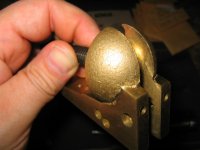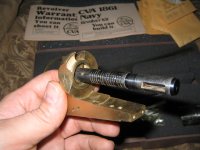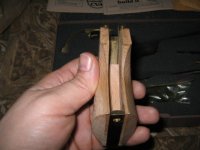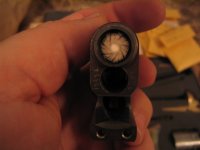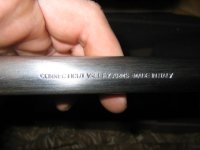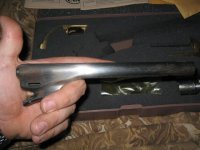Jason
Welcome to the forum from a former Pennsylvanian.
You asked for tips on finishing the pistol.
It looks like you are doing pretty good with the process.
When I was doing kits, the first thing I did in most cases was to test fit the parts to make sure the pistol fits together and works. You may have to leave out the grips because they may take a little shaping before they fit into the frame. Also, do not put the sight on the pistol yet. The revolvers I put together cycled pretty well without a lot of filing.
Once you are sure that the pistol will cycle and that indexing is fairly good, you can get started on the cosmetic aspects of the job.
To take the parts from their rough state to a more finished appearance is a staged process which begins with a file and then moves to various grades of sand paper and steel wool. It winds up (if you desire) with a fast cotton wheel and some rouge. I like black and green. You can get almost the same effect with steel wool. It is just that a fast wheel is, well, faster.
In the kits I bought, the steel had marks from the maufacturing process that were left by the milling machines. The brass parts had the casting marks which appeared as wrinkles and as cracks which are only a few thousandths of an inch deep.
I found that as you move through the process, care must be taken to avoid getting flat spots during the early part of the project when you are using the course tools. Just observe carefully with each stroke and don't overdo it. After I finish with a file I wrap sand paper around the file for the next phase of smoothing. On the barrel of this particular pistol you can do a good bit of the finish smoothing with the paper in your hand rather than around a file. (The paper-around-the-file technique is good when there are a lot of flat surfaces such as on an 1851 or on a Remington.)
I have been saying sand paper but I really should be using the term, "Abrasive cloth". Home Depot has it but their selection is not really that good. You may have better luck at car parts stores.
One of the beautiful aspects of this pistol is the graceful curves on the barrel. Yours has smoothed up nicely. You may want to examine photos of a lot of different pistols to get a feel for what you want yours to look like. In my opinion, the beauty of the pistol rests on a proper contour at the back of the barrel in the area below the bore on each side. In my opinion the pistol looks best when the line has been taken out but not much more than that. I do that part with a half round file. It is the first thing I work on in the smoothing process. To me, an 1860/61 with a pronounced line looks unfinished. I would do just a tiny bit more work on that part of the barrel but I hasten to add that it is a personal thing with me.


